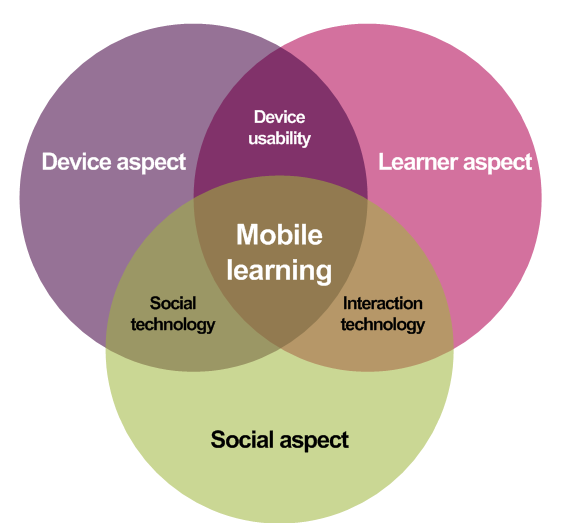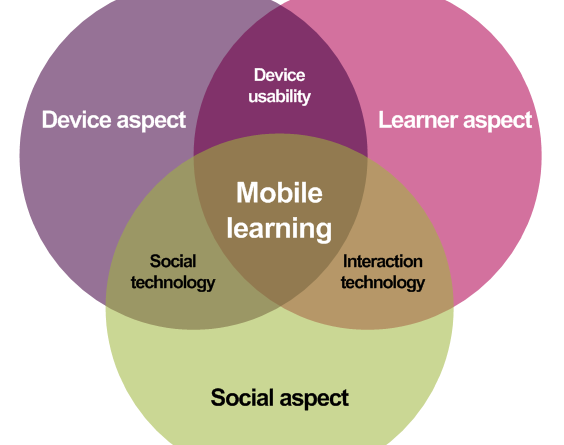The FRAME Model
The Framework for the Rational Analysis of Mobile Education ( FRAME) was developed by Marguerite Koole of Athabasca University, in Canadá. Three aspects are considered in her research: (1) mobile technologies, (2) human learning capacities and (3) social interaction ( KOOLE, 2010).
The research explains about the importance of her theory to develop mobile devices in the future, to design didactic strategies for teaching and learning and to create learning materials. For Koole (2010), the FRAME Model describes the possibility for learners to move in different situations, virtual and physical, to interact with other people , information or systems as well, anywhere, anytime.
Device, learner and social to comprehend the principal aspects of the Model. The first aspect, the Device, refers to the physical, technical and functional options of the mobile device. For koole (2010), it is very important to understand the device characteristics because the technology will impact in the usability. The second aspect is the Learner. It is very important to think about how learners conceive the learning process, observing the prior knowledge, intellectual capacity, motivation and emotional state. The last aspect is the Social. In this case, it is necessary to understand the social interaction and cooperation.
Then, these three aspects interact together and another aspects are created with the intersection of the first three.
Device with Learner = Device Usability
Device with Social = Social Technology
Learner with Social = Interaction Learning
The FRAME Model

More information:
http://cguevara.commons.gc.cuny.edu/files/2009/09/A-Model-for-Framing-Mobile-Learning.pdf
http://kooleady.ca/thoughts/?p=619
http://kooleady.ca/thoughts/?p=873
http://kooleady.ca/thoughts/?p=1019
If you prefer, listen the news here.
